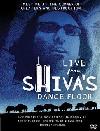 Timothy "Speed" Levitch was the star of the 1998 documentary The Cruise,
one of my favorite films of all time, which profiled the New York City
tour guide's unique perspectives on the city, his own transitory life
and deeper questions of existence. Through a series of bus loops,
interviews and walking tours, Speed displayed his enthusiasm, his
intelligence, his inquisitiveness and his romantic quest for
intellectual and spiritual fulfillment. One of the more eccentric
oddballs ever captured on film, Speed's extraordinary linguistic gifts
communicate his deep passion and jubilation at existence. His ideas are
the perfect antidote for a world that every day moves towards irony and
detachment, pessimism, cynicism and nihilism. Though it's a minor
travesty that The Cruise has never been released on the DVD
format (or even a VHS that doesn't cost upwards of $100), Aspyr Media
recently released this short documentary also featuring Speed, made
last year by Richard Linklater of Slacker. Linklater previously featured Speed in one segment of his animated masterpiece Waking Life,
a rambling episodic film that dealt with the many solutions to
existence offered by science, philosophy, magic and dreams. Clearly, he
was impressed enough to direct this follow-up film, which deals
primarily with Speed's response to the September 11, 2001 attack on New
York City - its historical context, its ramifications, and Speed's
unorthodox suggestion for what should be done with "Ground Zero." It is
a refreshing film that completely transcends the seemingly endless
parade of ridiculously schmaltzy, over-cautious and reverential garbage
that has been said about the tragedy by nearly everyone since 9/11.
Speed is anything but sentimental, living as he does in the eternal
"now," and his suggestion for the proper commemoration of Ground Zero
is uniquely inspired. The DVD also contains numerous extras, including
picture-in-picture annotations by Speed himself, as well as some live
appearances and readings from his recently published Speedology: Speed on New York City on Speed.
Standing at Ground Zero, Speed pontificates: "9/11 was one of the many
parables the great sagacious cosmopolitan guru has dropped upon this
population to illustrate one of its greatest points: the creation and
destruction that is the rhythm of the universe is a part of our
universe. Creation and destruction: the dance of Shiva. New York City
is an excellent dance floor for that specific choreography."
Timothy "Speed" Levitch was the star of the 1998 documentary The Cruise,
one of my favorite films of all time, which profiled the New York City
tour guide's unique perspectives on the city, his own transitory life
and deeper questions of existence. Through a series of bus loops,
interviews and walking tours, Speed displayed his enthusiasm, his
intelligence, his inquisitiveness and his romantic quest for
intellectual and spiritual fulfillment. One of the more eccentric
oddballs ever captured on film, Speed's extraordinary linguistic gifts
communicate his deep passion and jubilation at existence. His ideas are
the perfect antidote for a world that every day moves towards irony and
detachment, pessimism, cynicism and nihilism. Though it's a minor
travesty that The Cruise has never been released on the DVD
format (or even a VHS that doesn't cost upwards of $100), Aspyr Media
recently released this short documentary also featuring Speed, made
last year by Richard Linklater of Slacker. Linklater previously featured Speed in one segment of his animated masterpiece Waking Life,
a rambling episodic film that dealt with the many solutions to
existence offered by science, philosophy, magic and dreams. Clearly, he
was impressed enough to direct this follow-up film, which deals
primarily with Speed's response to the September 11, 2001 attack on New
York City - its historical context, its ramifications, and Speed's
unorthodox suggestion for what should be done with "Ground Zero." It is
a refreshing film that completely transcends the seemingly endless
parade of ridiculously schmaltzy, over-cautious and reverential garbage
that has been said about the tragedy by nearly everyone since 9/11.
Speed is anything but sentimental, living as he does in the eternal
"now," and his suggestion for the proper commemoration of Ground Zero
is uniquely inspired. The DVD also contains numerous extras, including
picture-in-picture annotations by Speed himself, as well as some live
appearances and readings from his recently published Speedology: Speed on New York City on Speed.
Standing at Ground Zero, Speed pontificates: "9/11 was one of the many
parables the great sagacious cosmopolitan guru has dropped upon this
population to illustrate one of its greatest points: the creation and
destruction that is the rhythm of the universe is a part of our
universe. Creation and destruction: the dance of Shiva. New York City
is an excellent dance floor for that specific choreography."
Two new shows just for you. We have squeezed out two extended release episodes for this weekend to get you through this week. They contain mostly new songs but there's also new issues from the vaults. The first show features music from Rider/Horse, Mint Field, Robert Aiki Aubrey Lowe, Anastasia Coope, ISAN, Stone Music, La Securite, Bark Psychosis, Jon Rose, Master Wilburn Burchette, Umberto, Wand, Tim Koh, Sun An, and Memory Drawings. The second episode has music by Laibach, Melt-Banana, Chuck Johnson, X, K. Yoshimatsu, Dorothy Carter, Pavel Milyakov, Violence Gratuite, Mark Templeton, Dummy, Endon, body / negative, Midwife, Alberto Boccardi, Divine. Cow in Maui from Veronika in Vienna. Get involved: subscribe, review, rate, share with your friends, send images! |



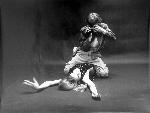 Italian auteur Michelangelo Antonioni's first film in English is also
arguably his most famous. Although it bears his trademark hypnotic,
dreamlike style, Blow-Up
transcends to another level with its commentary on and reflection of
London in 1966. Based on a story by Julio Cortázar and starring David
Hemmings, the plot revolves around a jaded fashion photographer who may
or may not have witnessed something sinister during a morning stroll in
the park. Like Antonioni's earlier films, Blow-Up progresses at
a languid tempo, and instead of plot, the emphasis lies primarily with
the essence of the characters, who range from aloof fashion models (one
in particular played by Veruschka, who was herself one of the most
famous models in the 1960s), naive groupies (Jane Birkin in one of her
first film roles), and a mysterious woman (Vanessa Redgrave)
relentlessly demanding the photographs taken of her and her lover by
the photographer during his walk in the park. The culture of 1960s
music is also plays a role in the film with the presence of the band
The Yardbirds during a club scene, although the score is dominated
mostly by the sleek, cool jazz of Herbie Hancock. It is endlessly
stylish (even now, nearly 40 years later), colorful and beautifully
photograped by Carlo di Ponti.
Italian auteur Michelangelo Antonioni's first film in English is also
arguably his most famous. Although it bears his trademark hypnotic,
dreamlike style, Blow-Up
transcends to another level with its commentary on and reflection of
London in 1966. Based on a story by Julio Cortázar and starring David
Hemmings, the plot revolves around a jaded fashion photographer who may
or may not have witnessed something sinister during a morning stroll in
the park. Like Antonioni's earlier films, Blow-Up progresses at
a languid tempo, and instead of plot, the emphasis lies primarily with
the essence of the characters, who range from aloof fashion models (one
in particular played by Veruschka, who was herself one of the most
famous models in the 1960s), naive groupies (Jane Birkin in one of her
first film roles), and a mysterious woman (Vanessa Redgrave)
relentlessly demanding the photographs taken of her and her lover by
the photographer during his walk in the park. The culture of 1960s
music is also plays a role in the film with the presence of the band
The Yardbirds during a club scene, although the score is dominated
mostly by the sleek, cool jazz of Herbie Hancock. It is endlessly
stylish (even now, nearly 40 years later), colorful and beautifully
photograped by Carlo di Ponti.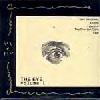 Although I've been contributing to The Brain for only two years, I've
been a fanatical reader and avid surfer of Brainwashed for nearly eight
years, and just because I work for the site now doesn't mean my
enthusiasm has faded. So, I was obviously excited last year when The
Eye made its first appearance with an impressive 35-minute documentary
on Emil Beaulieau. Initially, I wondered how anyone could possibly hope
to keep up the daunting schedule of producing a documentary every week.
Amazingly, confounding adversity, each week since has brought a brand
new episode to readers. I have nothing to do with the conception,
direction or production of The Eye, so I can say this without fear of
impropriety: The Eye is without peer; there is nothing else on the web
doing anything even remotely as interesting as this, and it's all for
free. This DVD-R, released as a fundraising effort, collects five
episodes of The Eye, including the aforementioned debut episode
profiling "America's Greatest Living Noise Artist." Through an engaging
montage of amazing live performances and numerous interviews with the
ebullient Beaulieau, his friends and cohorts, the doc builds an
intimate profile of the artist that illustrates clearly why Beaulieau
is a legend in noise circles. "Antony: The Androgynous Zone" is a
spellbindingly minimal short film that captures Antony (sans the
Johnsons) performing a rare solo piano recital in Boston, as well as
sitting for a revealing interview about his work, his influences and
his creative methods. "The Dresden Dolls: Brechtian Rock n' Roll" is an
in-depth feature on Boston's punk-cabaret duo on the eve of their
recent success. Delectable siren Amanda and adorable gothboy Brian sit
for an informative and humorous backstage interview about the origins
of the band. The Dolls performances excerpted throughout are top-notch.
The other two segments feature equally fascinating sketches of unsung
post-rock groups Pele and Tigersaw. Sound and picture quality are first
rate throughout the disc, far better than having to contend with that
little Quicktime window and computer speakers. A brief trailer for The
Eye DVD-R series is also included on the disc, with tantalizing
glimpses of episodes featuring Out Hud, Coil, Wire and others. I can
only hope that the future volumes may bring some of these artists to my
home theater.
Although I've been contributing to The Brain for only two years, I've
been a fanatical reader and avid surfer of Brainwashed for nearly eight
years, and just because I work for the site now doesn't mean my
enthusiasm has faded. So, I was obviously excited last year when The
Eye made its first appearance with an impressive 35-minute documentary
on Emil Beaulieau. Initially, I wondered how anyone could possibly hope
to keep up the daunting schedule of producing a documentary every week.
Amazingly, confounding adversity, each week since has brought a brand
new episode to readers. I have nothing to do with the conception,
direction or production of The Eye, so I can say this without fear of
impropriety: The Eye is without peer; there is nothing else on the web
doing anything even remotely as interesting as this, and it's all for
free. This DVD-R, released as a fundraising effort, collects five
episodes of The Eye, including the aforementioned debut episode
profiling "America's Greatest Living Noise Artist." Through an engaging
montage of amazing live performances and numerous interviews with the
ebullient Beaulieau, his friends and cohorts, the doc builds an
intimate profile of the artist that illustrates clearly why Beaulieau
is a legend in noise circles. "Antony: The Androgynous Zone" is a
spellbindingly minimal short film that captures Antony (sans the
Johnsons) performing a rare solo piano recital in Boston, as well as
sitting for a revealing interview about his work, his influences and
his creative methods. "The Dresden Dolls: Brechtian Rock n' Roll" is an
in-depth feature on Boston's punk-cabaret duo on the eve of their
recent success. Delectable siren Amanda and adorable gothboy Brian sit
for an informative and humorous backstage interview about the origins
of the band. The Dolls performances excerpted throughout are top-notch.
The other two segments feature equally fascinating sketches of unsung
post-rock groups Pele and Tigersaw. Sound and picture quality are first
rate throughout the disc, far better than having to contend with that
little Quicktime window and computer speakers. A brief trailer for The
Eye DVD-R series is also included on the disc, with tantalizing
glimpses of episodes featuring Out Hud, Coil, Wire and others. I can
only hope that the future volumes may bring some of these artists to my
home theater.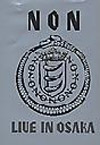 Boyd Rice is at the center of that spurious underground milieu which
rose to quasi-prominence in the eighties, combining industrial and
noise culture with LeVay-style Satanism, social Darwinism and fascist
aesthetics. The work of NON, and of its progenitors and followers,
influenced a generation of Dungeons and Dragons players, rivetheads and
white supremacists to unite their interests under an anti-establishment
banner that seemed pretty dangerous and sexy when it was new, but
appears a bit silly in retrospect. In truth, Boyd Rice created nothing
that hadn't been suggested previously by David Bowie, and especially
Throbbing Gristle. TG's interest in musical performance and noise as
cultural exorcism, agitation and political rally was clearly a
precedent for NON's subsequent exploitation. Boyd's only contribution
was to narrow and delineate these interests, and to incorporate his
neo-Satanic views and his sadistic sense of camp. Coming after the
double disappointment of last year's tepid Children of the Black Sun 5.1 surround-sound album, Soleilmoon officially releases Non Live in Osaka
on DVD, a frequently bootlegged recording of a legendary 1989 concert
in Japan. This concert was legendary because it was the first to unite
Boyd Rice, Douglas P., Rose McDowall, Tony Wakeford and Michael
Moynihan on one stage. They appear in a thick fog, flanked by red beams
of light, decked out in paramilitary gear, beating on giant barrel
drums, while Rice performs a series of propagandistic invocations in
his familiar modulated monotone. He spouts off the usual monologues
about war, might and superiority. None of this is particularly
ingenious, but it's very much better than any NON performance I've been
unfortunate enough to witness in this decade. In fact, it all seems
quite potent, with the big martial drumbeats, the grinding noise sweeps
and Boyd Rice's booming, echoing voice. I especially appreciated the
long introduction of Iron Guard marching songs directly preceding and
following the performance. Watching this transported me back to a time
when I thought it was quite daring to adopt an amoral, nihilistic
viewpoint and wear Nazi totenkopf symbols on my clothes. In addition to
some nifty photo slideshows accompanied by hilarious Japanese girl-pop,
the DVD also includes illuminating commentary and two experimental
short films by Boyd Rice. I've often heard these films compared to
Kenneth Anger's ritual-on-celluloid masterpieces such as Lucifer Rising and Invocation of My Demon Brother. Judging by the first film, Invocation,
Mr. Anger has nothing to worry about. This grainy, pornographic footage
has all the genius of any Hi-8 video made by a 13-year old goth
teenager from Des Moines. The second film, Black Sun, is much better, a Stan Brakhage-style celluloid trance-meditation on a spinning swastika.
Boyd Rice is at the center of that spurious underground milieu which
rose to quasi-prominence in the eighties, combining industrial and
noise culture with LeVay-style Satanism, social Darwinism and fascist
aesthetics. The work of NON, and of its progenitors and followers,
influenced a generation of Dungeons and Dragons players, rivetheads and
white supremacists to unite their interests under an anti-establishment
banner that seemed pretty dangerous and sexy when it was new, but
appears a bit silly in retrospect. In truth, Boyd Rice created nothing
that hadn't been suggested previously by David Bowie, and especially
Throbbing Gristle. TG's interest in musical performance and noise as
cultural exorcism, agitation and political rally was clearly a
precedent for NON's subsequent exploitation. Boyd's only contribution
was to narrow and delineate these interests, and to incorporate his
neo-Satanic views and his sadistic sense of camp. Coming after the
double disappointment of last year's tepid Children of the Black Sun 5.1 surround-sound album, Soleilmoon officially releases Non Live in Osaka
on DVD, a frequently bootlegged recording of a legendary 1989 concert
in Japan. This concert was legendary because it was the first to unite
Boyd Rice, Douglas P., Rose McDowall, Tony Wakeford and Michael
Moynihan on one stage. They appear in a thick fog, flanked by red beams
of light, decked out in paramilitary gear, beating on giant barrel
drums, while Rice performs a series of propagandistic invocations in
his familiar modulated monotone. He spouts off the usual monologues
about war, might and superiority. None of this is particularly
ingenious, but it's very much better than any NON performance I've been
unfortunate enough to witness in this decade. In fact, it all seems
quite potent, with the big martial drumbeats, the grinding noise sweeps
and Boyd Rice's booming, echoing voice. I especially appreciated the
long introduction of Iron Guard marching songs directly preceding and
following the performance. Watching this transported me back to a time
when I thought it was quite daring to adopt an amoral, nihilistic
viewpoint and wear Nazi totenkopf symbols on my clothes. In addition to
some nifty photo slideshows accompanied by hilarious Japanese girl-pop,
the DVD also includes illuminating commentary and two experimental
short films by Boyd Rice. I've often heard these films compared to
Kenneth Anger's ritual-on-celluloid masterpieces such as Lucifer Rising and Invocation of My Demon Brother. Judging by the first film, Invocation,
Mr. Anger has nothing to worry about. This grainy, pornographic footage
has all the genius of any Hi-8 video made by a 13-year old goth
teenager from Des Moines. The second film, Black Sun, is much better, a Stan Brakhage-style celluloid trance-meditation on a spinning swastika.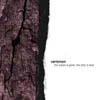 As far as creating atmospherics is concerned, the merging of similarsounds and muddy samples works fine in a simple and amateur way. Thisprinciple cannot be applied to a fifty minute record of unconventionalrecording processes. Nothing leaps out at me in any significant way onthis disc; many of the sounds are intriguing in and of themselves, butthey don't work out when stretched to times well over ten minutes. Ihave a feeling that they wouldn't work out at periods of five or sixminutes. While there are variations in sound and theme on each of thetracks, none of the themes fall into a distinct relationship witheachother and this ends up being unsatisfactory. "Four Chambers PlusTheir Various Fluids" has a great spot near the middle of it thatfeatures the rattling of metal pipes, awkward springs, and bustedpendulums, but it doesn't sync into the rest of the song and emergesfrom the previous section like a young child on stilts. It ultimatelymoves nowhere and returns to silence when covered up by other sounds.On the other hand, "Some Trio Study (#2)" feels as if it belongs in aretirement home; it's a loop of some wonderful melodic samples thatstretch into infinity and change only slightly for the course of fiveminutes. The effect is stunning for the first minute and then themonotony wears thin. The best and the worst is saved for last; "HarborSurfacant" features some stretched and pitch samples of classicinstruments rotating and dying in a mess of pops and claps. It is byfar the most inspiring of the five pieces, but that does not hide thefact that what could've been a journey into the darker realms ofthought ends up sounding more like a damaged toy piano. There's nodynamics at play to keep things interesting for the nine minute runningtime. I just can't sit through it without checking the time to see ifit's over, yet. The sounds are fun here and there, but Vertonen simplycannot come up with an arrangement that stays consistently interesting.
As far as creating atmospherics is concerned, the merging of similarsounds and muddy samples works fine in a simple and amateur way. Thisprinciple cannot be applied to a fifty minute record of unconventionalrecording processes. Nothing leaps out at me in any significant way onthis disc; many of the sounds are intriguing in and of themselves, butthey don't work out when stretched to times well over ten minutes. Ihave a feeling that they wouldn't work out at periods of five or sixminutes. While there are variations in sound and theme on each of thetracks, none of the themes fall into a distinct relationship witheachother and this ends up being unsatisfactory. "Four Chambers PlusTheir Various Fluids" has a great spot near the middle of it thatfeatures the rattling of metal pipes, awkward springs, and bustedpendulums, but it doesn't sync into the rest of the song and emergesfrom the previous section like a young child on stilts. It ultimatelymoves nowhere and returns to silence when covered up by other sounds.On the other hand, "Some Trio Study (#2)" feels as if it belongs in aretirement home; it's a loop of some wonderful melodic samples thatstretch into infinity and change only slightly for the course of fiveminutes. The effect is stunning for the first minute and then themonotony wears thin. The best and the worst is saved for last; "HarborSurfacant" features some stretched and pitch samples of classicinstruments rotating and dying in a mess of pops and claps. It is byfar the most inspiring of the five pieces, but that does not hide thefact that what could've been a journey into the darker realms ofthought ends up sounding more like a damaged toy piano. There's nodynamics at play to keep things interesting for the nine minute runningtime. I just can't sit through it without checking the time to see ifit's over, yet. The sounds are fun here and there, but Vertonen simplycannot come up with an arrangement that stays consistently interesting.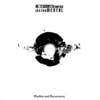 Bill Laswell is trying way too hard. He couldn't decide whether or notthis record was going to be broadcast from Mars, made danceable bysolid rhythms from the past, or infected with the spirit of imaginationand experimentation and this is more than enough to hurt the album. Thereare all sorts of pseudo-melodies winding their way between bass-heavyrhythm sections and musty turntable effects, but none of them stand outor doing anything like create the feel of a hook.Now and then there's a groove established by way of bass guitar andrecord-scratching, but none of them stand out over the other; it's asif every instrument was made to take center stage. This is a solorecord for all heavy and groggy instruments in the court of nothing. Atonce a song can feel like an excursion into Jamaica, a shout out to thebeat-masters of yesterday, and a trip into the drug-fuelled,hallucinogenic march of the future. "Black Dust" is a perfect example;the bass sounds great, the rhythm is heavy and hot, and there's a hintof some exotic instrumentation weaving its way out of the background;but none of these elements ever mix together. They clash like PresidentBush and common sense. The sound of Casio keyboards imitating disco-erahorns don't synch well with the grit and grime of funky rhythms andsumptuous bass pounding. I can appreciate someone who wants to pushboundaries and create new sounds for others to work with, but Laswellsimply isn't doing that or, in the very least, he isn't doing it wellenough. With a mix like this, all of the elements can't work togetherin a perfect unity; something has to be sacrificed (I'd like it if itwere all the faux-psychadelia and space-inspired thematics) for it towork.
Bill Laswell is trying way too hard. He couldn't decide whether or notthis record was going to be broadcast from Mars, made danceable bysolid rhythms from the past, or infected with the spirit of imaginationand experimentation and this is more than enough to hurt the album. Thereare all sorts of pseudo-melodies winding their way between bass-heavyrhythm sections and musty turntable effects, but none of them stand outor doing anything like create the feel of a hook.Now and then there's a groove established by way of bass guitar andrecord-scratching, but none of them stand out over the other; it's asif every instrument was made to take center stage. This is a solorecord for all heavy and groggy instruments in the court of nothing. Atonce a song can feel like an excursion into Jamaica, a shout out to thebeat-masters of yesterday, and a trip into the drug-fuelled,hallucinogenic march of the future. "Black Dust" is a perfect example;the bass sounds great, the rhythm is heavy and hot, and there's a hintof some exotic instrumentation weaving its way out of the background;but none of these elements ever mix together. They clash like PresidentBush and common sense. The sound of Casio keyboards imitating disco-erahorns don't synch well with the grit and grime of funky rhythms andsumptuous bass pounding. I can appreciate someone who wants to pushboundaries and create new sounds for others to work with, but Laswellsimply isn't doing that or, in the very least, he isn't doing it wellenough. With a mix like this, all of the elements can't work togetherin a perfect unity; something has to be sacrificed (I'd like it if itwere all the faux-psychadelia and space-inspired thematics) for it towork.  Those who slip on the Mekons new album as a novice to the band andtheir wiles will no doubt be a bit dumbfounded. Listening to therecord, I could hear countless passages of music that I've heardelsewhere, or something so similar I would swear it was influenced bysomeone else — if I didn't know that these songs were written almost 30years ago and just recently recorded for the release. Punk Rockis a study of a band at their absolute finest, re-embracing musicthey'd written off a quarter-century ago in favor of loftier heightsand bolder experimentations. Maybe all that experience has fed thesesongs, too, as there's a wisened approach to the compositions. Pairedwith the naked aggression and powerhouse vocals is a variedinstrumentation and brave altering of tempo. These songs have a punkheart but their brains are scrambled in how to present it the heart'sfeelings. It's like punk viewed through different lenses, or a tributealbum of great punk songs by various bands, some punk some not. Thatthe band chose to record these songs to celebrate their 25thanniversary as a band is extremely telling, as they truly went backtheir beginnings to dredge this up. The album is an experience that'ssometimes rollicking fun, sometimes tear in your beer, but always aninteresting ride. The stomp of "Teeth" that opens the record is a greatindication of what lies inside, for the most part, with all instrumentsblazing to the finish line. This sentiment is echoed on "I'm So Happy"and "32 Weeks," as well, but the moments are staggered in betweentracks that slow it down a bit, bringing across a purified version ofthe song at its most naked, without the pomp and circumstance thatsometimes comes with the genre. What I hear most of all on the recordis how these songs influenced the band in the beginning and how thatspirit affected every release since.
Those who slip on the Mekons new album as a novice to the band andtheir wiles will no doubt be a bit dumbfounded. Listening to therecord, I could hear countless passages of music that I've heardelsewhere, or something so similar I would swear it was influenced bysomeone else — if I didn't know that these songs were written almost 30years ago and just recently recorded for the release. Punk Rockis a study of a band at their absolute finest, re-embracing musicthey'd written off a quarter-century ago in favor of loftier heightsand bolder experimentations. Maybe all that experience has fed thesesongs, too, as there's a wisened approach to the compositions. Pairedwith the naked aggression and powerhouse vocals is a variedinstrumentation and brave altering of tempo. These songs have a punkheart but their brains are scrambled in how to present it the heart'sfeelings. It's like punk viewed through different lenses, or a tributealbum of great punk songs by various bands, some punk some not. Thatthe band chose to record these songs to celebrate their 25thanniversary as a band is extremely telling, as they truly went backtheir beginnings to dredge this up. The album is an experience that'ssometimes rollicking fun, sometimes tear in your beer, but always aninteresting ride. The stomp of "Teeth" that opens the record is a greatindication of what lies inside, for the most part, with all instrumentsblazing to the finish line. This sentiment is echoed on "I'm So Happy"and "32 Weeks," as well, but the moments are staggered in betweentracks that slow it down a bit, bringing across a purified version ofthe song at its most naked, without the pomp and circumstance thatsometimes comes with the genre. What I hear most of all on the recordis how these songs influenced the band in the beginning and how thatspirit affected every release since. The Frames' lack of notoriety in the US is not due to any lack ofeffort on their parts. With two releases on Overcoat, including their2001 studio album For the Birdsand a compilation of unreleased tracks, the band has been on theseshores for several club tours, getting their name out and entertainingthe masses with their polished live sound. Where other Irish bands havetried this route with limited success on a grand scale, The Frames seemto want a home-grown fanbase, teaming their small club presence withintimate albums recorded with Steve Albini and in someone's kitchen. In2003, they recorded a live album in front of a sold-out Dublin crowd,and released it to great acclaim in their home country, where it toppedthe charts and critic's polls at year's end. Now, with a new deal onEpitaph's Anti imprint, Glan Hansard and the boys are making another goon American audiences on a slightly larger scale, with that very livealbum as the first release to give people a taste of the already richcatalog of songs the band has accrued. Three of their studio albums arerepresented with more than one track, and several of them becomeextended rock jams in front of an audience. Many have said that TheFrames are a live band first, and hearing the CD I can understand why.Hansard gives his all vocally, yelping at the top of his lungs inareas, and the band blisters their way through songs, though the crowddoesn't seem to mind. In fact, it's always a good sign if you have thecrowd singing along with every word, and on several tracks that'sexactly what happens, most notably on "Lay Me Down," where the crowdbecomes an almost impromptu choir. Hansard also proves an amusing andamiable frontman, conversing with the crowd and offering stories andanecdotes here and there. Though the album is a tour-de-forceculmination of all their energies, there are small missteps, like theinclusion of "Ring of Fire" into "Lay Me Down," and the fact that themajority of the songs will be lost on a new listener, with no studioversions to compare them to as the albums are not available in the USand are rather difficult to order. That said, it's a great primer fortheir new studio album due later this year, and a great show of theextremes the band goes through, from somewhat down-tempo numbers to theall-out assault of "God Bless Mom." One thing's for sure: with anupcoming US tour supporting it-boy Damien Rice, I'll be one of thefirst in line to see if they can live up to Set List.
The Frames' lack of notoriety in the US is not due to any lack ofeffort on their parts. With two releases on Overcoat, including their2001 studio album For the Birdsand a compilation of unreleased tracks, the band has been on theseshores for several club tours, getting their name out and entertainingthe masses with their polished live sound. Where other Irish bands havetried this route with limited success on a grand scale, The Frames seemto want a home-grown fanbase, teaming their small club presence withintimate albums recorded with Steve Albini and in someone's kitchen. In2003, they recorded a live album in front of a sold-out Dublin crowd,and released it to great acclaim in their home country, where it toppedthe charts and critic's polls at year's end. Now, with a new deal onEpitaph's Anti imprint, Glan Hansard and the boys are making another goon American audiences on a slightly larger scale, with that very livealbum as the first release to give people a taste of the already richcatalog of songs the band has accrued. Three of their studio albums arerepresented with more than one track, and several of them becomeextended rock jams in front of an audience. Many have said that TheFrames are a live band first, and hearing the CD I can understand why.Hansard gives his all vocally, yelping at the top of his lungs inareas, and the band blisters their way through songs, though the crowddoesn't seem to mind. In fact, it's always a good sign if you have thecrowd singing along with every word, and on several tracks that'sexactly what happens, most notably on "Lay Me Down," where the crowdbecomes an almost impromptu choir. Hansard also proves an amusing andamiable frontman, conversing with the crowd and offering stories andanecdotes here and there. Though the album is a tour-de-forceculmination of all their energies, there are small missteps, like theinclusion of "Ring of Fire" into "Lay Me Down," and the fact that themajority of the songs will be lost on a new listener, with no studioversions to compare them to as the albums are not available in the USand are rather difficult to order. That said, it's a great primer fortheir new studio album due later this year, and a great show of theextremes the band goes through, from somewhat down-tempo numbers to theall-out assault of "God Bless Mom." One thing's for sure: with anupcoming US tour supporting it-boy Damien Rice, I'll be one of thefirst in line to see if they can live up to Set List.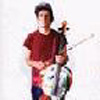 Hot on the heels of Soul Jazz's The World of Arthur Russell, Audika Records releases Calling Out of Context, the first in a projected three volumes chronicling Russell's work throughout the 1980s. Where The World of compiled the best of his avant-disco sides originally released limited pressings in NYC's disco heyday, Context offers a glimpse at Russell's unreleased work, culled from his vast private archive of recorded material.
Hot on the heels of Soul Jazz's The World of Arthur Russell, Audika Records releases Calling Out of Context, the first in a projected three volumes chronicling Russell's work throughout the 1980s. Where The World of compiled the best of his avant-disco sides originally released limited pressings in NYC's disco heyday, Context offers a glimpse at Russell's unreleased work, culled from his vast private archive of recorded material. Adam Pierce has evolved Mice Parade from its humble beginnings to a full-fledged accomplished live ensemble, a feat especially impressive given his other dealings in HiM, touring with M√∫m, and running Bubble Core. After the success and bombast of that experience, Pierce went back home and recorded another album mostly by himself, but he felt the need to incorporate his experiences on the road and some of his friends from other projects, culminating in the fantastic new work of Obrigado Saudade.
Adam Pierce has evolved Mice Parade from its humble beginnings to a full-fledged accomplished live ensemble, a feat especially impressive given his other dealings in HiM, touring with M√∫m, and running Bubble Core. After the success and bombast of that experience, Pierce went back home and recorded another album mostly by himself, but he felt the need to incorporate his experiences on the road and some of his friends from other projects, culminating in the fantastic new work of Obrigado Saudade.
